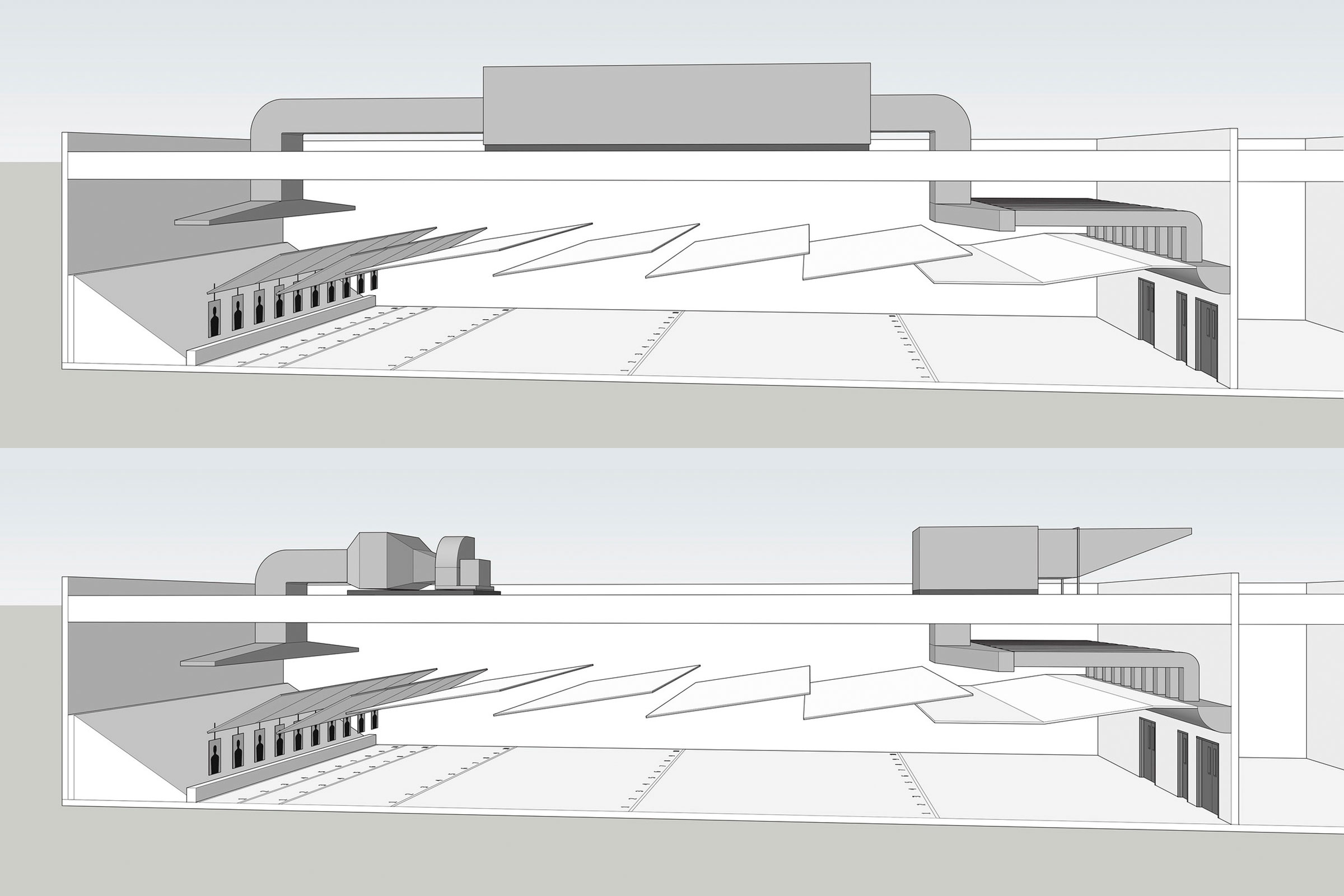 The primary purpose of the ventilation system is to remove contaminants created during the firing of a weapon from the breathing zones of those occupying the range. Fired primers containing lead compounds and friction from the lead bullet against the gun barrel create airborne lead particulate matter. Carbon monoxide and other harmful contaminants are also created during the firing of a weapon. The ventilation system removes these harmful particles.
The primary purpose of the ventilation system is to remove contaminants created during the firing of a weapon from the breathing zones of those occupying the range. Fired primers containing lead compounds and friction from the lead bullet against the gun barrel create airborne lead particulate matter. Carbon monoxide and other harmful contaminants are also created during the firing of a weapon. The ventilation system removes these harmful particles.
The next, and equally important, reason for a properly designed and installed ventilation system is to keep the range at a negative pressure to the surrounding building space. Contaminants need to be contained in the range space. This will prevent the inhalation of these harmful particles, and also keep the non-range spaces and surfaces of the building free of contamination.
A third purpose of the ventilation system is to remove the smoke from the range so visibility is clear and the targets can be seen.
Integrated Design Successful Technologies:
DIFFUSER
The method that has proven to be most successful in indoor firing ranges is the use of a radial diffuser. The diffuser supplies air into the range in a 90 degree radial pattern at a nominal 70 feet per minute velocity and in a laminar fashion. These flow characteristics move the particulate matter down range and away from the range occupants. These diffusers are custom built and tested to provide proper air flow at the firing line.
HEPA FILTRATION
Whether all of the range ventilation air is exhausted in a single pass purge system, or a portion of it is re-circulated for a cooled system, all air in the system passes through HEPA filters prior to exhaust or recirculation. This ensure that contaminants are filtered out and not introduced to the exterior environment or back into the range.